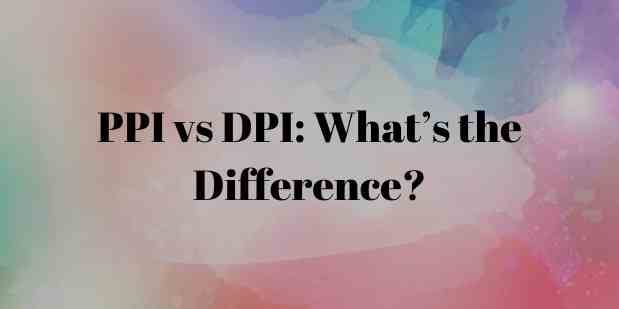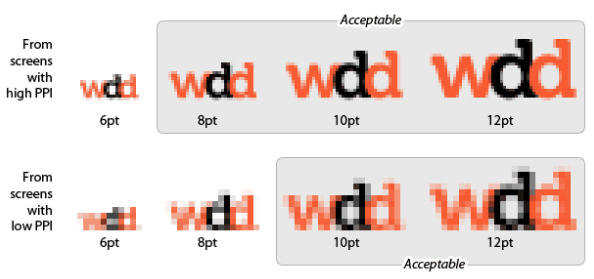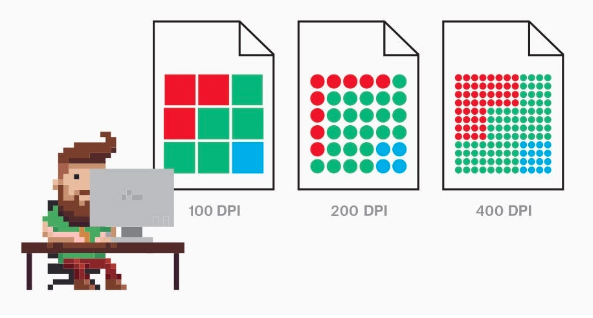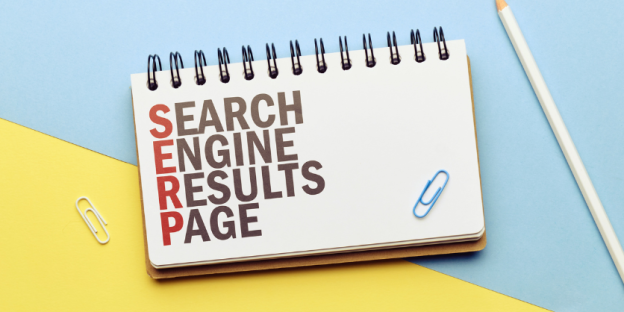PPI vs DPI: What’s the Difference?

PPI & DPI are two terms associated with the images, they define the clarity and resolution of images but both the terms are used for separate media that is digital & print. Many people often interchange PPI & DPI but it shouldn’t happen as both of them are different from each other. You must have an idea & understanding the working of both of them & how to apply each in the projects. With PPI & DPI you can have quality prints for both digital & prints. To optimize better printing no matter which platform you choose you must have knowledge of PPI & DPI as it can save yourself a lot of valuable time. So, let us demystify both of these terms to know about & difference between PPI & DPI.
What’s the difference between PPI & DPI?
PPI defines the resolution of a digital image in pixels on the other hand DPI describes the amount of ink dots on a printed image. Even PPI refers to screen display, but it also affects the print size of your design & the quality of the output as well. However, DPI has nothing to do with digital & primarily concerns print.
PPI RESOLUTION
What PPI Means?
PPI stands for pixels per inch, it refers to the fixed number of pixels that a screen can display along with the density of pixels within a digital image. If we have to define the pixel count then it can be defined as the number of pixels across the length & width of a digital image. And the Pixels of “picture elements”, are the smallest building blocks of a digital image. You can zoom in any digital image and it will break into colored squares. These squares are known as pixels.
Within the pixels there are sub-pixels, red, green and blue light elements that the usual human eye can’t see because additive color processing blends them into a single hue which appears on the pixel level. This is the reason why PPI uses the RGB (Red, Gree, & Blue) color model & also known as the additive color model. All this doesn’t exist in print, only in electronic display of images, like computers, television screens, monitors and also digital photography.
When do you use PPI?
Whenever you are working with digital media you have to use PPI. It is most useful in preparing files for printing, however DPI will be used by the physical printer. If the image has a higher PPI then it will have a higher quality because of the high number in pixel density. The industry standard quality is defined at around 300 PPI.
When you increase the PPI of the image then the size of the file increases. So, if small size is necessary then you should only choose high PPI when necessary. If the printing requires smaller details then it is recommended to have higher resolution. If you want to print an image on canvas then it does not require higher resolution because details get lost in the texture of the material. PPI doesn’t matter for distribution on the internet because the pixel density of the monitor is fixed. No matter if the image is a 72 PPI or a 3,000 PPI, it will appear the same on your screen. The pixel dimensions are the ones that determine the size & detail of your image.
How to Set or Change PPI Resolution?
Raster Programs is the software that works with pixel based media like Photoshop. Have you set up the PPI resolution right at the beginning when you create a document? You will find resolutions listed with other parameters in the New Document window.
You can easily increase the resolution of any image that you have created as you can resample it. Resampling is the process where you can change the amount of pixels in an image. The software can create or delete pixels to preserve image quality.
In Photoshop, you can follow this to Image>Image Size. In the image size window you will have the options from changing the height, width & PPI resolution of your image. You just need to “Resample” checkbox & set it to “Preserve Details” to choose how Photoshop fills in the new Pixels.
You also have the option to decrease the resolution & if you want to set the PPI to lower value. The pixel count decreases, the image size & dimensions decreases as well. The resolution will increase when you will set the PPI to a higher value. It is also suggested to avoid the change in PPI on an existing image whenever possible. Because the resampling process requires Photoshop to create new pixels from scratch. The computer generated pixels can create unintentional results on your image.
DPI Printing
What DPI Means?
DPI stands for dots per inch & it can be defined as the resolution value of a physical printer. The printers create an image by spitting out tiny dots, & the number of dots per inch can affect the amount of detail & overall quality of the print.
Unlike PPI, DPI uses the CMYK (Cyan, Magenta, Yellow, Black) color model. It can easily control the amount of green, red & blue light that is reflected from white paper. It is also called the subtractive color model. The dots of each color are printed in different patterns, enabling the human eye to perceive a specific color made from this combination. The dots are fixed in size & resolution is only affected by how many dots appear per inch.
When do you use DPI?
When your design is ready to be printed physically, then the printer will use DPI. The uniqueness of images depends on the model & style of printer & the settings. If we talk about Inkjet printers produce a resolution around 300-720 DPI, while laser printers produce images anywhere from 600 to 2,400 DPI.
There is no defined dot size or shape, so even if the DPI is higher it will still doesn’t have high quality print. Usually the books & magazines use 150 DPI for photographs & newspapers often use 85 DPI. So, before printing we suggest to consult the printer specifications to find the relevant DPI for your project.
Image Resolution Matters
Understanding & comprehending the use of PPI will help you get the high-quality images whenever you use it. And it is also crucial to navigate DPI will help you to effectively communicate with printing machines to have better results. So understanding PPI & DPI is very effective if you are a professional designer. Because even the best design can be ruined by a poor image resolution.






